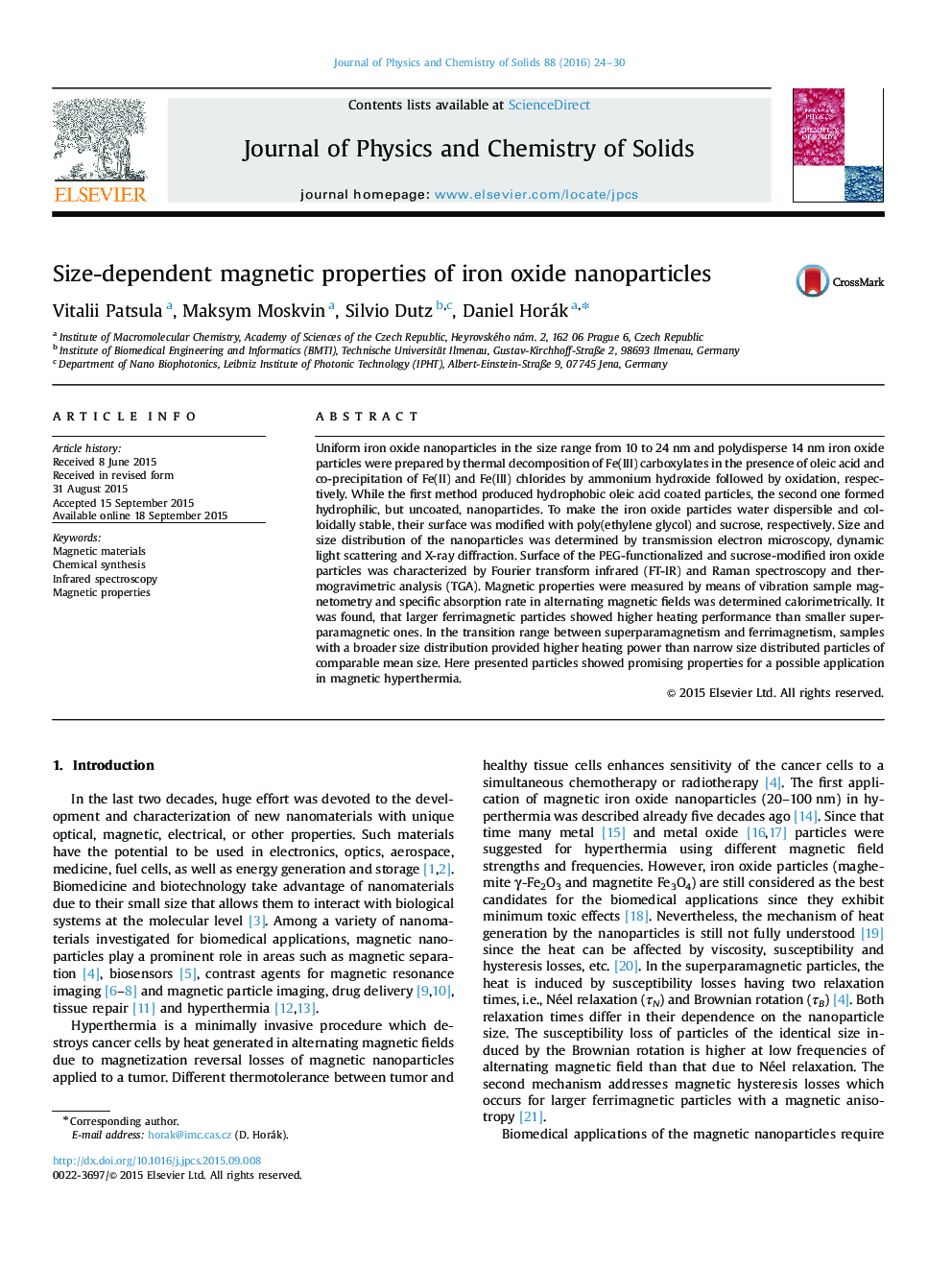| Article ID | Journal | Published Year | Pages | File Type |
|---|---|---|---|---|
| 1515499 | Journal of Physics and Chemistry of Solids | 2016 | 7 Pages |
•Magnetic iron oxide nanoparticles were obtained by both coprecipitation and thermal decomposition method and their magnetic properties were compared.•Large ferrimagnetic monodisperse nanoparticles exhibited stronger heating performance under external magnetic field than small superparamagnetic ones.•Polydisperse nanoparticles provided higher heating power than monodisperse particles of comparable mean size.
Uniform iron oxide nanoparticles in the size range from 10 to 24 nm and polydisperse 14 nm iron oxide particles were prepared by thermal decomposition of Fe(III) carboxylates in the presence of oleic acid and co-precipitation of Fe(II) and Fe(III) chlorides by ammonium hydroxide followed by oxidation, respectively. While the first method produced hydrophobic oleic acid coated particles, the second one formed hydrophilic, but uncoated, nanoparticles. To make the iron oxide particles water dispersible and colloidally stable, their surface was modified with poly(ethylene glycol) and sucrose, respectively. Size and size distribution of the nanoparticles was determined by transmission electron microscopy, dynamic light scattering and X-ray diffraction. Surface of the PEG-functionalized and sucrose-modified iron oxide particles was characterized by Fourier transform infrared (FT-IR) and Raman spectroscopy and thermogravimetric analysis (TGA). Magnetic properties were measured by means of vibration sample magnetometry and specific absorption rate in alternating magnetic fields was determined calorimetrically. It was found, that larger ferrimagnetic particles showed higher heating performance than smaller superparamagnetic ones. In the transition range between superparamagnetism and ferrimagnetism, samples with a broader size distribution provided higher heating power than narrow size distributed particles of comparable mean size. Here presented particles showed promising properties for a possible application in magnetic hyperthermia.
Graphical abstractFigure optionsDownload full-size imageDownload as PowerPoint slide
